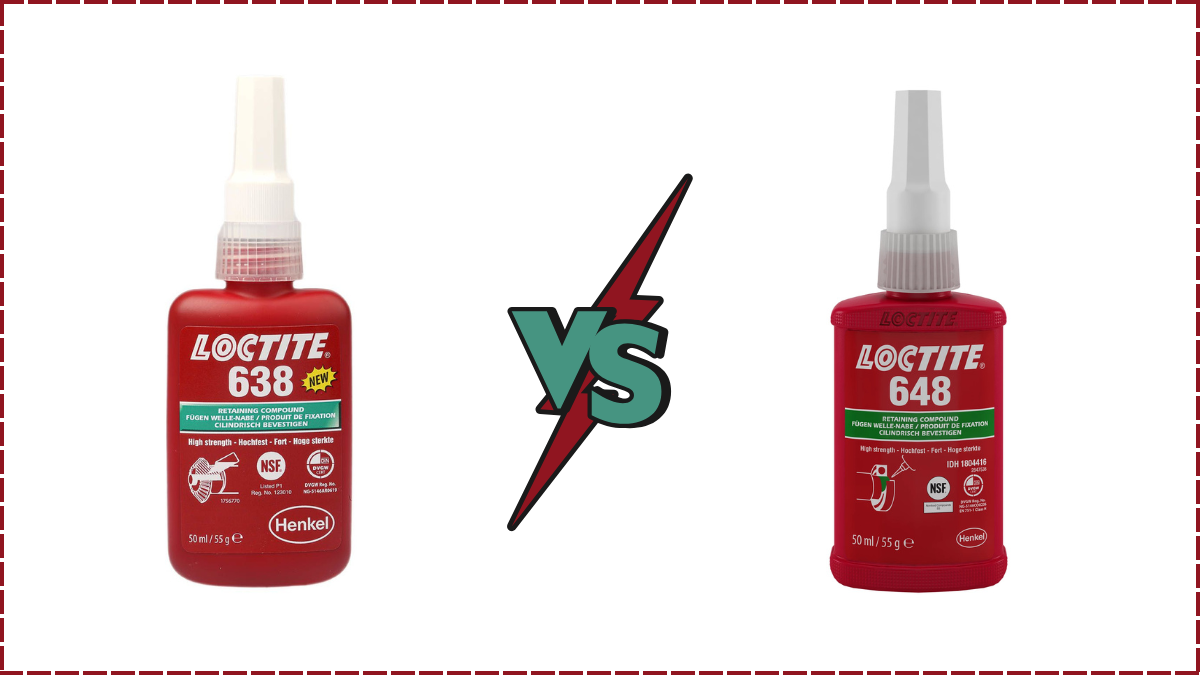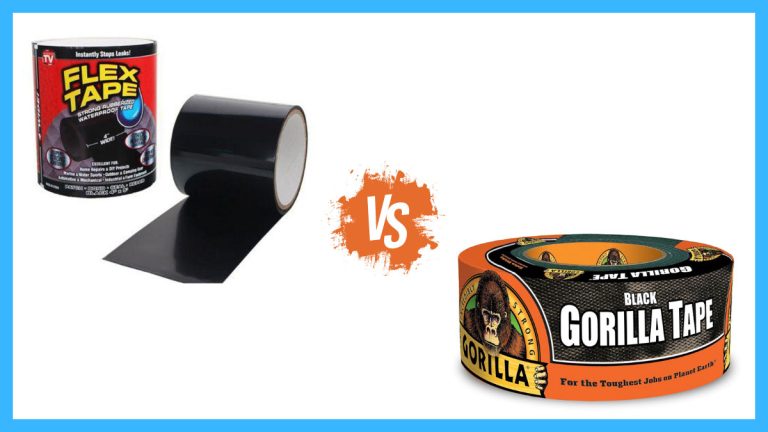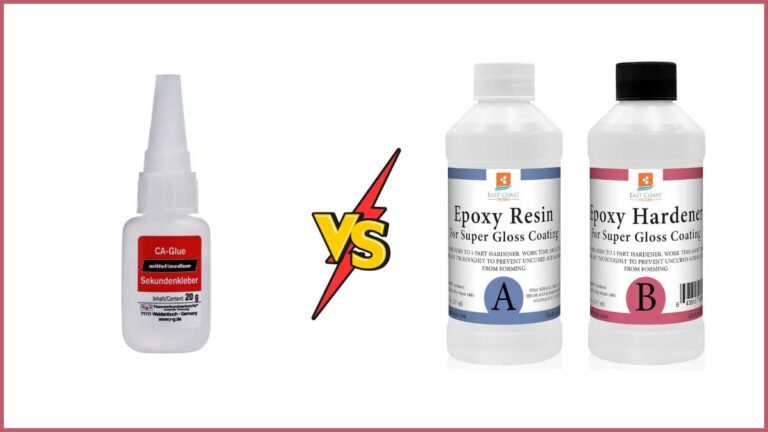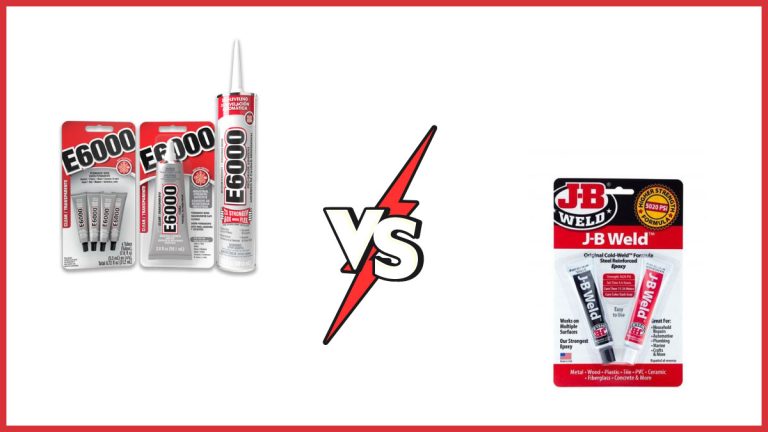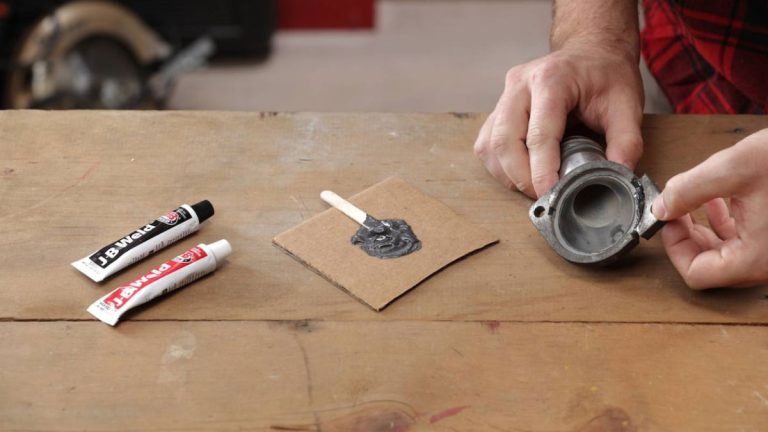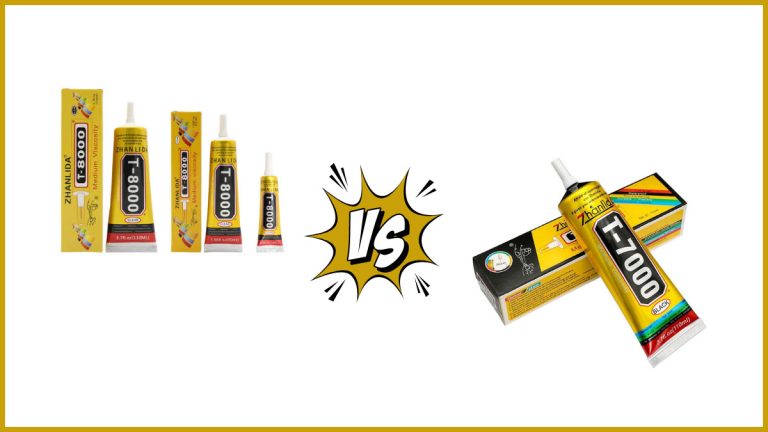Loctite 638 vs 648: Which Adhesive is Right for Your Project?
When you’re looking for the best adhesive solutions for high-strength bonding, Loctite 638 and 648 often come up as top contenders. Both products are renowned for their reliability and performance in industrial applications, but how do you decide which one suits your needs better? Understanding the key differences between Loctite 638 and 648 can save you time and ensure your project’s success.
In this text, you’ll discover the unique features and benefits of each adhesive. Whether you’re dealing with heavy-duty machinery or precision instruments, knowing which product to use can make all the difference. Let’s jump into the specifics and help you make an informed choice.
Key Takeaways
- Temperature Resistance: Both Loctite 638 and 648 withstand high temperatures, but Loctite 648 can handle slightly higher temperatures up to 200°C (392°F).
- Gap Fill Capability: Loctite 638 is suitable for larger gaps up to 0.25mm, while Loctite 648 is designed for smaller gaps up to 0.15mm, making it ideal for precision tasks.
- Viscosity Differences: Loctite 638 has higher viscosity, making it better for applications requiring more substantial bonding, whereas Loctite 648’s lower viscosity is perfect for more accurate applications.
- Cure Speed: Loctite 648 cures faster on passive metals, making it suitable for time-sensitive projects.
- Strength and Load Handling: Loctite 638 offers the highest strength for heavy-duty applications involving dynamic, axial, and radial loads, while Loctite 648 provides robust bonding for precise applications.
- Surface Compatibility: Both adhesives cure well on active and passive metal surfaces, tolerate minor oil contamination, and offer high chemical resistance, ensuring reliable performance in various conditions.
Overview
Loctite 638 and 648 are both high-strength retaining compounds designed for bonding cylindrical fitting parts. They share several characteristics, yet each compound possesses unique attributes suitable for distinct applications.
Similarities
Temperature Resistance:
Both Loctite 638 and 648 resist temperatures up to 180°C (355°F), making them effective in high-temperature environments.
Surface Compatibility:
These compounds cure well on active and passive metal surfaces, including mild steel, stainless steel, and plated surfaces. Importantly, they don’t require a primer.
Oil Tolerance:
Both products tolerate minor surface contaminations from oils such as cutting fluids, lubrication, anti-corrosion, and protection fluids.
Chemical Resistance:
Loctite 638 and 648 have high resistance to chemicals and improved heat aging properties, ensuring durability in various conditions.
Differences
We’ll now investigate into what sets Loctite 638 apart from Loctite 648, focusing on their unique characteristics.
Strength:
Loctite 638 provides the highest strength of all Loctite retaining compounds, making it ideal for heavy-duty applications.
Gap Fill:
Loctite 648, although also strong, is better suited for smaller gaps with its capability to fill clearances up to 0.15mm. This product is perfect for high precision tasks.
Cure Speed:
The cure speed of Loctite 648 is quicker on passive metals, making it a better choice when time is of the essence.
Detailed Comparison Table
Here’s a side-by-side comparison for a clear view:
| Feature | Loctite 638 | Loctite 648 |
|---|---|---|
| Max Temperature | 180°C (355°F) | 180°C (355°F) |
| Strength | Highest of all retaining compounds | High, but slightly less than 638 |
| Surface Compatibility | Active/Passive metals | Active/Passive metals |
| Oil Tolerance | Yes | Yes |
| Gap Fill | Up to 0.25mm | Up to 0.15mm |
| Chemical Resistance | High | High |
| Cure Speed | Slower on passive metals | Faster on passive metals |
Understanding these details empowers you to choose the best Loctite product for your specific needs, optimizing both performance and longevity.
Key Features
Understanding the key features of Loctite 638 and 648 is crucial in determining which adhesive best suits your specific application needs. Both products are renowned for their reliability, but they excel in different aspects.
Loctite 638
Temperature Resistance:
- Operates within a temperature range of -55°C to 180°C (-65°F to 355°F), making it suitable for various environments.
- Exhibits improved heat aging properties which enhance durability even under prolonged heat exposure.
Viscosity:
- Higher viscosity compared to Loctite 648.
- Better suited for applications involving larger gaps, ensuring secure bonding.
Strength:
- Designed to resist dynamic, axial, and radial loads.
- Ideal for high-load applications, providing enhanced strength and stability.
Surface Tolerance:
- Capable of curing effectively on passive metal surfaces like aluminum or stainless steel.
- Tolerates light contamination from oils and other fluids, making it versatile in different industrial settings.
Applications:
- Primarily used for securing bearings, bushes, and cylindrical parts into housings or onto shafts.
- Highly recommended for scenarios requiring higher load transmission.
Loctite 648
Temperature Resistance:
- Operates within a similar temperature range of -55°C to 180°C (-65°F to 355°F).
- Can be used effectively at service temperatures up to 200°C (392°F), providing additional flexibility in high-heat applications.
Viscosity:
- Lower viscosity compared to Loctite 638.
- Suitable for smaller gaps, ensuring precise bonding for high-accuracy tasks.
Strength:
- Offers high strength but is optimized for different stress factors compared to Loctite 638.
- Efficient in applications that don’t require handling extreme loads but demand precision.
Surface Tolerance:
- Excels in curing speed on passive metals, reducing downtime.
- Compatible with systems where rapid setup and reduced operational waits are critical.
- Perfect for smaller, precision tasks where gap sizes are minimal.
- Frequently used in high-precision instrument assembly and other applications demanding meticulous alignment.
By comparing these features, you can better determine which adhesive meets your specific project requirements. Here’s a quick reference table to simplify this comparison:
| Feature | Loctite 638 | Loctite 648 |
|---|---|---|
| Temperature Resistance | -55°C to 180°C (-65°F to 355°F), heat aging properties | -55°C to 200°C (-65°F to 392°F) |
| Viscosity | Higher (thicker) for larger gaps | Lower (thinner) for smaller gaps |
| Strength | Resists dynamic, axial, radial loads | High strength, optimized for precision |
| Surface Tolerance | Cures on passive metals, tolerates light contamination | Rapid cure on passive metals |
| Applications | Bearings, bushes, cylindrical parts | High-precision tasks, small gaps |
Evaluate these key features to make an well-informed choice and ensure optimal performance and longevity for your specific applications.
Performance Comparison
Choosing between Loctite 638 and 648 requires understanding their performance attributes. These adhesives, ideal for cylindrical fitting parts, offer distinct features that cater to different industrial needs.
Strength and Durability
Loctite 638 exhibits strong performance for various load types. Designed for slip fit parts with smaller gaps, it offers:
- Dynamic load capacity: Suited for applications with dynamic, axial, and radial loads.
- Contaminant bonding: Binds through oils, cutting fluids, and corrosion protectants without needing an activator.
- Application suitability: Ideal for parts with minimal gaps.
Loctite 648, on the other hand, is tailored for more robust bonding. It shines in applications involving cylindrical fitting parts with larger gaps:
- Interference fit: Perfect for clearance or interference fit parts.
- High strength: Provides reliable strength for heavy-duty applications.
- Slight contamination tolerance: Works effectively on slightly oily surfaces.
Here’s a quick overview of their strength and durability:
| Feature | Loctite 638 | Loctite 648 |
|---|---|---|
| Load Capacity | Dynamic, axial, radial loads | Robust high strength |
| Application Gaps | Smaller gaps | Larger gaps |
| Contaminant Resistance | Oils, cutting, corrosion fluids | Slightly oily surfaces |
Temperature Resistance
When considering temperature resistance, Loctite 638 offers improved performance in high-temperature environments. Its upgraded formula operates effectively up to 180°C (355°F), providing:
- Heat tolerance: Withstands up to 180°C (355°F).
- Heat aging: Superior heat aging properties.
Conversely, Loctite 648 performs reliably at even higher temperatures and exhibits:
- Extended range: Service temperatures up to 200°C (392°F).
- Stability: Consistent performance under high-temperature conditions.
Here’s a comparative look at their temperature resistance:
| Feature | Loctite 638 | Loctite 648 |
|---|---|---|
| Max Operating Temperature | 180°C (355°F) | 200°C (392°F) |
| Heat Aging | Superior | Stable |
Understanding these characteristics helps you select the right adhesive for your specific needs, balancing factors like gap sizes, load types, and temperature conditions. Each product’s strength and temperature resistance cater to different industry requirements, ensuring optimal performance for diverse applications.
Application Scenarios
Understanding the application scenarios for Loctite 638 and 648 helps you choose the right adhesive for your specific needs.
Common Use Cases
Loctite 638:
- Heavy-Duty Bonding: Ideal for bonding cylindrical fitting parts in heavy machinery.
- Large Gaps: Effective for gaps up to 0.25 mm, commonly found in industrial components.
- Dynamic Loads: Excellent for applications involving significant mechanical stresses or vibrations.
Loctite 648:
- Precision Engineering: Suited for high-precision tasks requiring a strong bond with small gaps up to 0.15 mm.
- Quick Cure: Faster curing speeds on passive metals, reducing downtime in maintenance.
- High-Temperature Environments: Performs reliably in settings with temperatures up to 200°C.
Industry Applications
Loctite 638:
- Automotive: Used in engines and transmission assemblies where high strength and durability are crucial.
- Aerospace: Suitable for bonding components subjected to dynamic loads and temperature fluctuations.
- Industrial Equipment: Applied in heavy-duty machinery requiring robust and reliable bonding solutions.
Loctite 648:
- Electronics: Ideal for bonding parts in electronic devices requiring precision and stability.
- Medical Devices: Commonly used in the assembly of sterility-critical components where precision and reliable bonding are paramount.
- Manufacturing: Utilized in the production line for quick repairs and bonding tasks to minimize downtime.
Industry applications for these adhesives cover diverse sectors, offering specific advantages based on their unique properties. Here’s a detailed comparison to help understand their application contexts better:
| Property | Loctite 638 | Loctite 648 |
|---|---|---|
| Viscosity | High | Low |
| Gap Fill | Up to 0.25 mm | Up to 0.15 mm |
| Temperature Range | -55°C to 150°C | -55°C to 180°C (usable up to 200°C) |
| Surface Compatibility | Works on metals, plated surfaces, carbon fiber with activator | Active/passive substrates, stainless steel |
These details ensure you can make informed decisions based on your industry’s specific requirements and achieve optimal results for your projects.
User Experiences and Reviews
Viscosity and Gap Fill
- Loctite 638: Users appreciate its higher viscosity of 2500.0 mPa·s, which is suitable for filling gaps up to 0.25 mm. This makes it ideal for applications with larger gaps. But, some users have noted that its high viscosity prevents it from fully seeping between surfaces in certain situations.
- Loctite 648: With a lower viscosity of 500.0 mPa·s, this product is favored for close tolerance applications. It fills gaps up to 0.15 mm. Users find it effective for tighter fits, citing its thinner consistency as an asset for precision work.
Strength
- Loctite 638: Boasting a shear strength of 31 N/mm², it’s highly rated for heavy-duty applications. Some users find it struggles to infiltrate surfaces completely due to its high thickness, which might hinder its overall bonding strength in specific contexts.
- Loctite 648: With a shear strength of 27 N/mm², it’s slightly less strong than 638. Nonetheless, users praise its ability to provide robust bonding in precision applications where its thinner viscosity compensates for any marginal loss in strength.
Temperature Range
Both products have similar temperature ranges but differ slightly in practical use:
- Loctite 638: Performs effectively up to 150°C. Users working in moderately high-temperature environments find it reliable.
- Loctite 648: Works efficiently up to 175°C, making it suitable for applications requiring higher temperature resistance. Users in high-heat settings often choose 648 over 638.
User Feedback and Practical Insights
- Loctite 638:
- Users with heavy-duty needs appreciate its high strength for securing large components.
- Some feedback highlights issues with excess thickness, which can impede proper surface penetration.
- Loctite 648:
- Highly favored in precise engineering tasks due to its lower viscosity.
- Users commend its efficiency in filling small gaps and its ability to withstand higher temperatures.
Comparative Data
| Aspect | Loctite 638 | Loctite 648 |
|---|---|---|
| Viscosity (mPa·s) | 2500.0 | 500.0 |
| Maximum Gap Fill (mm) | 0.25 | 0.15 |
| Shear Strength (N/mm²) | 31 | 27 |
| Temperature Range (°C) | Up to 150 | Up to 175 |
Conclusion
When choosing between Loctite 638 and 648, consider the specific needs of your project. Use 638 for larger gaps and heavy-duty applications, and opt for 648 for high-precision tasks and higher temperature resistance. Both products offer reliable bonding solutions, but aligning their unique features with your requirements will maximize performance and longevity.
Conclusion
Choosing between Loctite 638 and 648 depends on your specific project requirements. If you’re dealing with heavy-duty applications and larger gaps, Loctite 638’s higher strength and viscosity make it the ideal choice. On the other hand, for high-precision tasks and smaller gaps, Loctite 648’s quicker cure speed and higher temperature resistance are advantageous.
Both adhesives offer robust performance and reliability, but understanding their unique features will help you make an well-informed choice. Evaluate your needs carefully to select the adhesive that will optimize your project’s performance and longevity.
Frequently Asked Questions
What is Loctite 638 used for?
Loctite 638 is designed for bonding cylindrical fitting parts, particularly in heavy-duty applications with narrow bond gaps up to 0.25 mm. It offers high strength and is suitable for fast curing on all metals, including passive substrates like stainless steel.
What is Loctite 648 used for?
Loctite 648 is used for bonding cylindrical fitting parts with small gaps up to 0.15 mm. It is ideal for high-precision tasks and offers rapid curing on passive metals, making it suitable for electronics and medical devices.
What are the main differences between Loctite 638 and 648?
Loctite 638 offers higher strength and is suited for larger gaps and heavy-duty applications, while Loctite 648 has a lower viscosity and quicker curing time, making it ideal for smaller gaps and precision tasks.
Can Loctite 638 be used at high temperatures?
Yes, Loctite 638 can be used at temperatures up to 180°C (355°F). It is designed to perform well in a wide temperature range, making it versatile for various industrial settings.
Is Loctite 648 suitable for high-temperature applications?
Yes, Loctite 648 is suitable for high-temperature applications and can be used at service temperatures up to 200°C (392°F), making it excellent for environments requiring higher temperature resistance.
Can Loctite 638 bond through contaminants?
Yes, Loctite 638 can bond through minor surface contaminants, making it versatile and effective in industrial applications where perfect cleanliness is not always possible.
Which Loctite adhesive is better for heavy-duty applications?
For heavy-duty applications, Loctite 638 is better suited due to its higher shear strength of 31 N/mm² and ability to fill larger gaps, offering robust performance in demanding environments.
Which Loctite adhesive is better for precision tasks?
Loctite 648 is better for precision tasks due to its lower viscosity, ability to fill smaller gaps up to 0.15 mm, and quick curing speed on passive metals, making it ideal for electronics and medical devices.
How do users rate Loctite 638?
Users appreciate Loctite 638 for its high strength and effectiveness in securing large components, although its high viscosity can sometimes impede surface penetration.
How do users rate Loctite 648?
Users favor Loctite 648 for its efficiency in filling small gaps and ability to withstand higher temperatures, praising its performance in precise engineering tasks.

